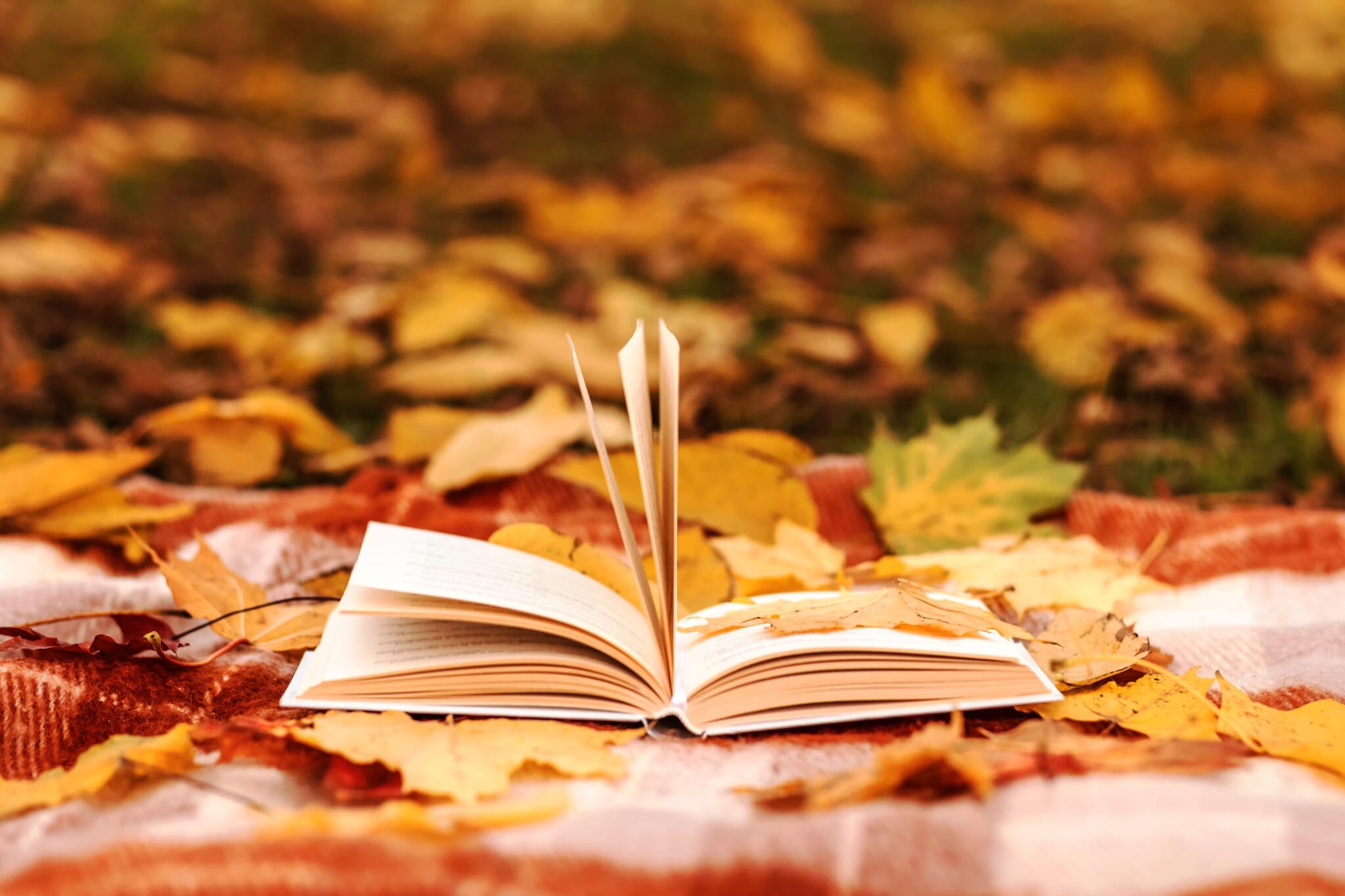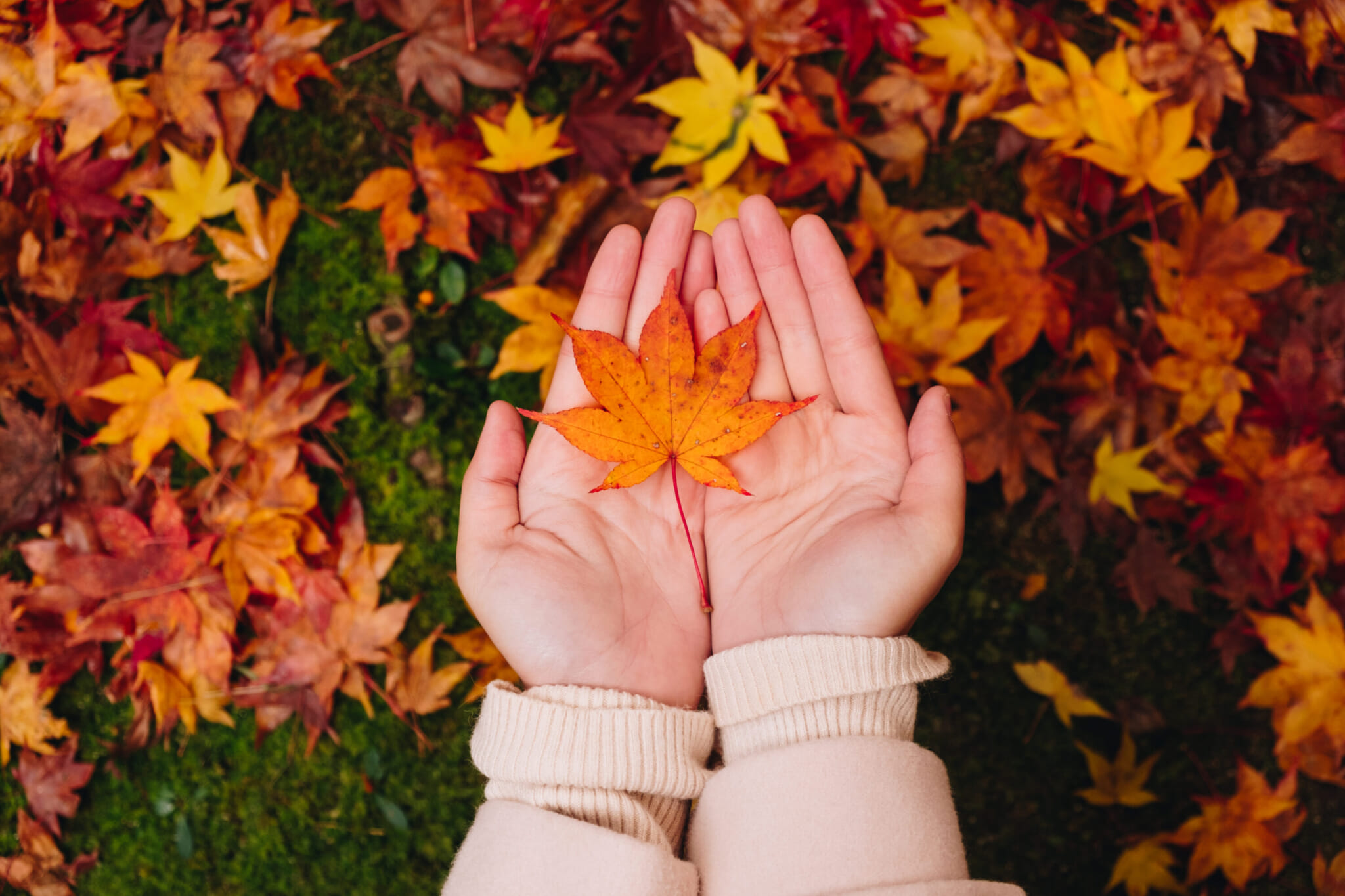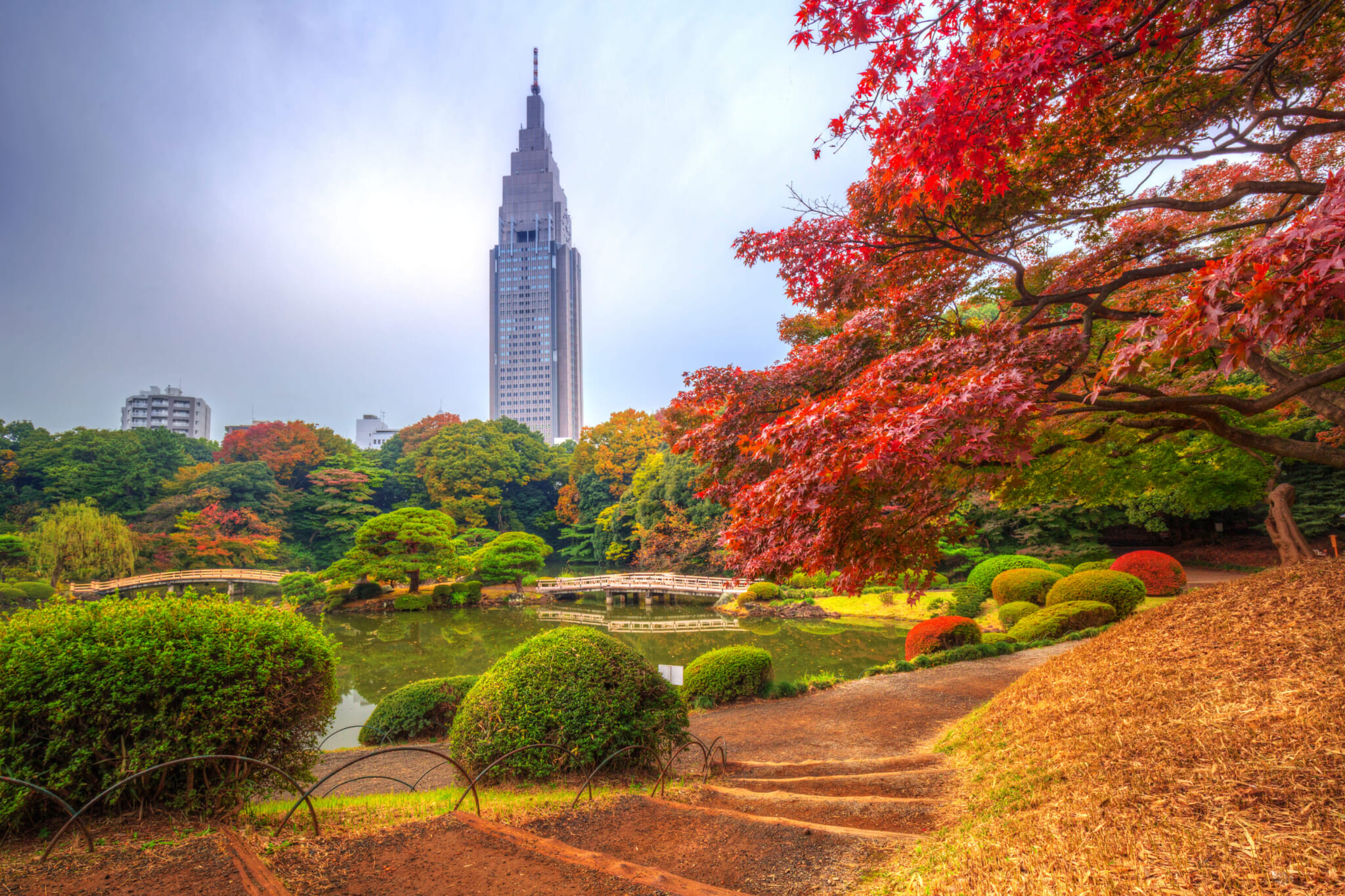
One Pursuit, Many Names: Momiji-gari, Autumn Leaf Viewing and Koyo
Autumn leaf viewing has a few names, the usage of which has changed as the years have passed. This article will use them semi-interchangeably, so it’s good to know what these Japanese phrases mean before we get stuck in.
For most of the eighth century it was known as “yellow leaf” viewing. This, though, changed during the Heian period (794-1185). Gradually, the preferred color of reference became red. Hence, since Heian times, the hobby has been known as momiji-gari, which literally means “red leaf hunting.” Up until the present-day, “koyo,” which originally referred to the leaves changing color from green to red, has become commonplace.
Interestingly, the Japanese kanji characters for koyo and momiji are the same: 紅葉. “Momiji” by itself can also refer to Japanese maple trees, a symbol of koyo season. Maple leaves turn fantastic colors, their sharp points creating gorgeous gradients as they taper off like flames in the fire, embodying the spirit of koyo.
Koyo Origins
Back in the Nara period (710-794), aristocrats headed into the mountains to find vibrant leaves. Once discovered, they would spend time under the branches, writing haiku and waka (a widespread name for various types of poetry), inspired by the beautiful colors. In contrast to cherry blossom season, when revelers would picnic and make merry, fall was a time of peace and quiet reflection.
It was documented in the Manyoshu, Japan’s oldest waka poetry collection, which features over 100 poems dedicated to autumn leaves and momiji-gari. Significantly, momiji-gari also appeared in The Tale of Genji, which was published during the Heian period. Murasaki Shikibu‘s story is considered Japan’s first novel, describing the lives of aristocrats during the time, and viewed as a hugely influential book in the canon of Japanese literature.

Edo Period: Leaves for Common People
For a long time, momiji-gari was considered a pursuit of the upper-classes. Heading into the mountains to view leaves was quite simply an indulgence, not to mention a hazard, especially if you didn’t have time to spend.
Yet during the Edo period (1603-1867), pilgrimages to shrines began to receive attention. This introduced the idea of traveling for leisure, which became even more popular in 1780, when Akisato Rito wrote Miyako Meisho Zue, a travel guidebook. Seen as the first of its kind, it introduced accessible travel to the masses. The first edition covered Kyoto — the capital city at the time — profiling key spots in the area.
This included Tofukuji Temple in the Higashiyama district. Legend has it that it was originally a popular cherry-blossom viewing spot, but the crowds upset its painter-priest, who ordered that the cherry blossom trees be felled. The shogunate replaced them with maple leaf trees, ironically leading to an even more impressive spectacle. Currently, the temple attracts thousands of visitors each year. They head to the Tsutenkyo Bridge to catch sight of the approximately 2,000 incandescent trees.
Present Day Koyo
Nowadays, all ages and demographics can appreciate the gorgeous autumn leaf colors. Since the activity first became popular, it has been subject to a myriad of dedications, not only in literature.
Kimono designs, ceramic patterns on teacups and more, you name it, there’s a leaf motif version there somewhere. As times have changed, depictions have progressed. Not only literature and patterns, but various momiji-shaped goodies and snacks can be found come fall.
Maple-shaped manju are available in Japanese wagashi-ya (traditional sweets store), if you’re feeling more old-fashioned. Or you can head to any convenience store to be confronted with a variety of autumn leaf-themed snacks, in various fall flavors. From chestnut to sweet potato, these snacks are as much to be enjoyed at home as they are under glowing maple leaves.

Best Spots to See Autumn Leaves
After reading about Japan’s love for autumn leaf viewing, you’ll no doubt want to try some spots to enjoy.








